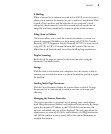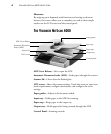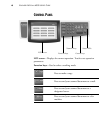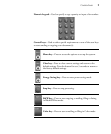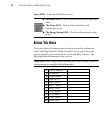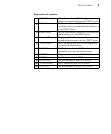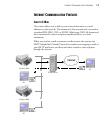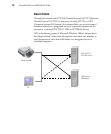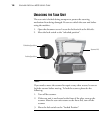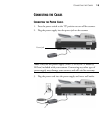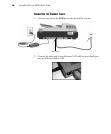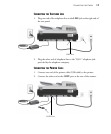
10 VISIONEER NETSCAN 4000 USER’S GUIDE
Note:
1. DHCP Server—With DHCP (Dynamic Host Configuration
Protocol), a host can automatically be given a unique IP address
each time it connects to a network—making IP address
management an easier task for network administrators. If the
DHCP server is available from your network, you do not need to
enter the TCP/IP, subnet mask, gateway, and DNS information.
Instead, this information will be automatically given for the scanner.
2. IP Address—An IP (Internet Protocol) address uniquely identifies a
host connection to an IP network. The system administrator or
network designer assigns the IP address. The IP address consists of
two parts, one identifying the network and one identifying your
node.
The IP address is usually written as four numbers separated by
periods. Each number can be zero to 255. For example, 10.1.30.186
could be an IP address.
3. SMTP—Stands for Simple Mail Transfer Protocol. It is the main
communication protocol used to send and receive e-mail on the
internet.
4. DNS—Stands for Domain Name System. The DNS server
identifies hosts via names instead of IP addresses. If the DNS server
is available on your network, you can enter the domain name instead
of numbers for the IP address.
5. POP3—POP3 is the latest Post Office Protocol, this is a service that
stores and serves e-mails for various client machines that are not
connected to the Internet 24 hours a day. E-mails are held in POP3
until you log on.
6. LDAP—Stands for Lightweight Directory Access Protocol. LDAP
enables users to access directories and address books directly from
external networked devices to simplify document distribution.




